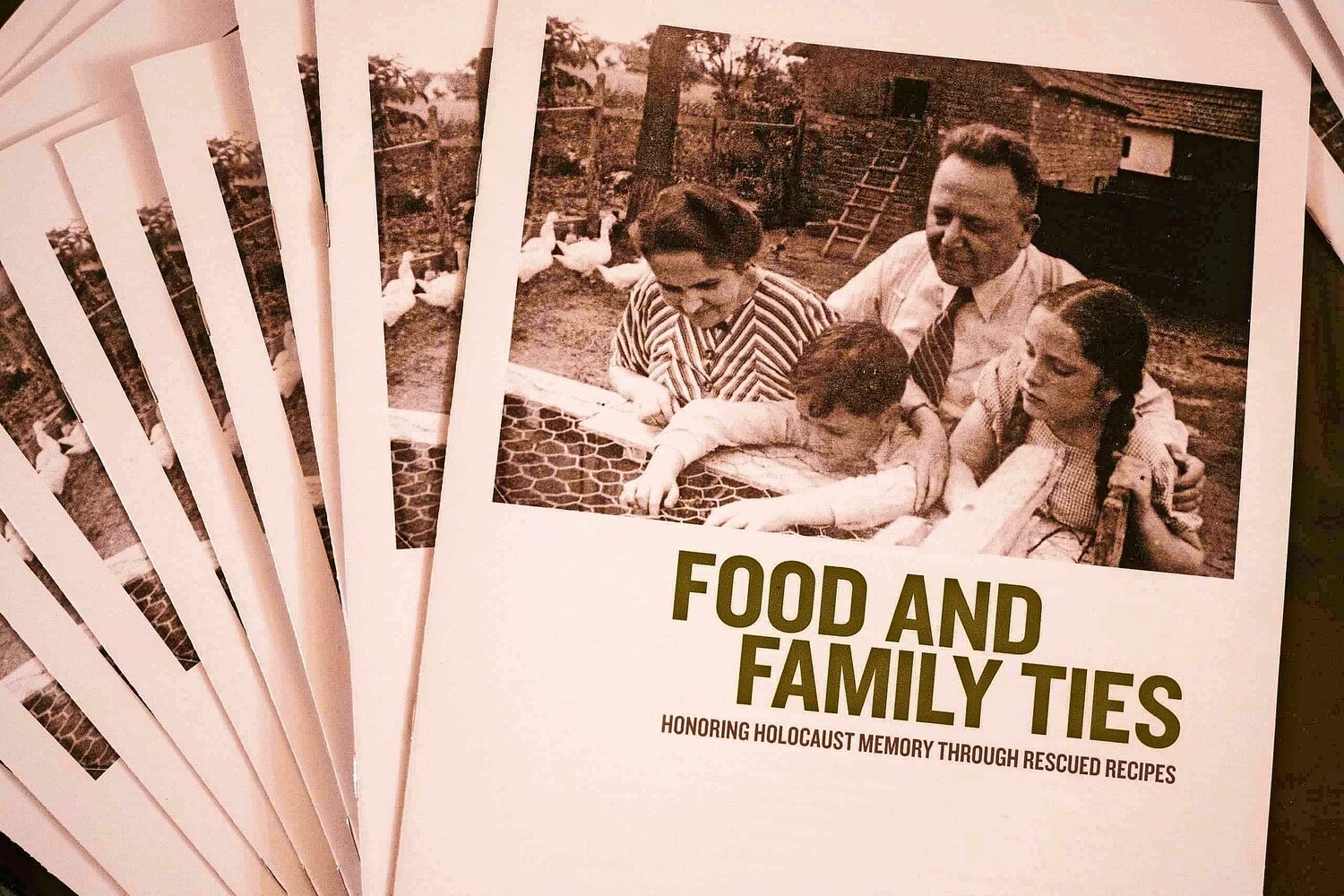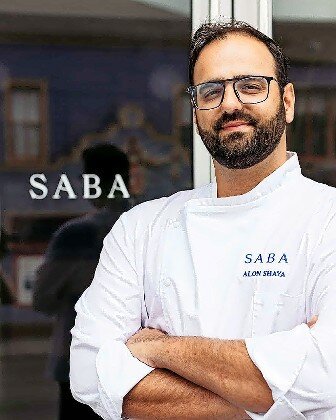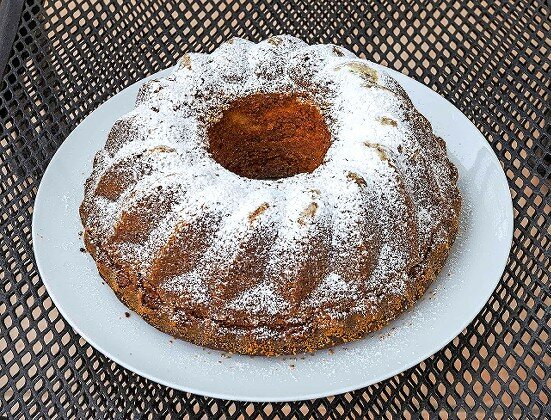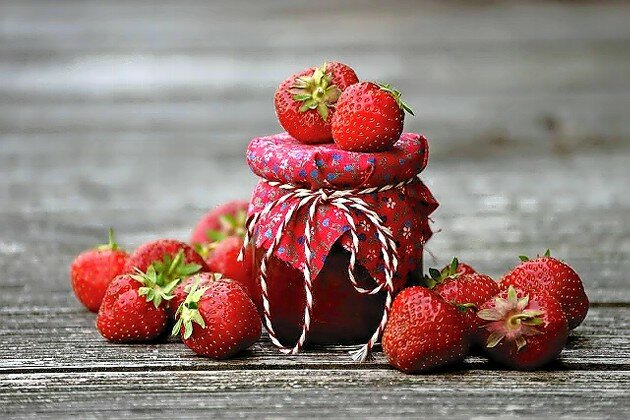Never Forgetting the Good Times: Cooking like it’s 1938
I first met Alon Shaya when he was a lanky, handsome youth at the Culinary Institute of America (CIA) in Hyde Park, NY. He radiated excitement and enthusiasm. He was a student in one of the finest professional culinary schools in America, and he couldn’t wait to get to classes. His goal? To learn more about the food he had grown up with and gain the ability to add his own creative spin to it. I knew then that he was going to have a brilliant culinary career.
It wasn’t always easy. Born in Israel and raised in Philadelphia, he had a troubled childhood; he mixed with the wrong crowds and proved a rebellious teenager. But Donna Barnett, his high school home economics teacher and mentor, recognized talent when she saw it — and she saw it in him.
“He had magic hands,” she says. “He was able to look at food differently — the feel of the dough, even how he cut vegetables, the way he arranged the food on the plate.”
Now, Alon is a two-time James Beard Award-winning chef. Dining at any one of his celebrated restaurants is a culinary adventure with dishes gleaned from Israel; from a cooking stint in Italy and steeped in the American South; with Saba, Miss River and the Chandelier Bar in New Orleans, Safta in Denver and soon-to-be-opened Silan at the Atlantis Paradise Island resort in the Bahamas. True to his Israeli roots, Saba means “father,” Safta means “grandmother” and Silan refers to dates that grow abundantly in Israel and the syrup that is made from them.
About four years ago on a visit to the United States Holocaust Memorial Museum in Washington, chef Alon discovered a handwritten recipe book by Klara Fenves: the Fenves family cookbook. Alon was spellbound. This was a cookbook written more than 80 years ago. Determined to know more, he tracked down her son, Steven Fenves, a Holocaust survivor who happened to be a volunteer at the museum. Bonding over memories of family meals in Yugoslavia before the Holocaust, Steven shared with Alon vivid memories of the sounds and smells from his family’s kitchen, trips to the market and the taste of dishes cooked by Maris, the family cook. He also recounted how in 1941, their lives changed forever.
Steven’s father, Lajos, lost his business when it was given to a non-Jew. Klara began knitting shawls, and they sold most of their possessions in order to survive. In 1944, 13-year-old Steven and his family were sent to Auschwitz-Birkenau. Only Steven and his sister, and their father, survived. As neighbors looted the family home, Maris rescued some of Klara’s artwork and the book. After the war, she returned the items to Steven. The Fenves family recipe book was donated by Steven and is now on display at the museum.
It’s far more than just about food; it offers a glimpse into one Jewish family’s comfortable life before the Holocaust. Alon notes that “it’s more than an artifact in the museum’s collection. It’s a window into a time before the Holocaust when Jewish people were free and celebrating life.”
Alon and his wife, Emily, felt compelled to do something with this heirloom. They wanted a firsthand account of the story behind the cookbook and how the family lived in safe, untroubled times, as they also heard how the joys of family life were destroyed. And so the journey began.
Steven translated recipes written in Hungarian. In New Orleans, Alon worked to produce each dish so that he could create the taste, textures and appearance as Steven remembered them. He packed the completed dishes in ice and sent them to Steven to sample. It was the first time in more than half a century that he had tasted his mother’s recipes — “and they were good,” he said.
Recreating these dishes was no mean feat. Before World War II, being a family cook in Europe was a full-time job. It was a time when cooks could tell the exact consistency by appearance or feel.
Urchin Salad described by Steven was whatever fresh vegetables and herbs were in the pantry. Meals were fresh, redolent and labor-intensive. But there’s no question: The result is well worth the time as I tasted a remarkable variety of rescued recipes at a recent fundraising event in Philadelphia.
With a $1 million goal to benefit the Holocaust museum, Alon, Emily and the museum are hosting eight fundraisers in cities across the country. “Working together with Steven to recreate Fenves family dishes is one of the most amazing experiences I’ve ever had as a chef and human being,” attests Alon.
Below find the Semolina Sticks (one of the simpler recipes) from the “Food and Family Ties: Honoring Holocaust Memory Through Rescued Recipes,” recreated by Alon. Inspired by Steven, also included is Alon Shaya’s Strawberry jam as his Bulgarian grandmother (safta) made it, as well as Gesundheit Kuchen (a “blessing cake”) brought to America by my late husband’s German family in 1938. It was served at brit milahs, engagement parties and other happy occasions.
Eat well and in good health!
Semolina Sticks (Dairy)
Makes 4 to 6 servings or 16 sticks
For the Semolina Sticks:
Ingredients:
2 cups whole milk
1 stick (4 Tbsp.) unsalted butter
1 tsp. Morton coarse kosher salt
1 tsp. granulated sugar
1/2 cup semolina flour
For dredging and frying:
1 cup all-purpose flour
2 eggs
1/2 cup whole milk
8 oz. plain bread crumbs
4 cups vegetable oil
Directions:
Line a 9x6 rimmed baking sheet with parchment paper. Place milk, butter, salt and sugar in a saucepan over medium heat. Bring to a simmer and whisk in the semolina. Simmer for 10 minutes, stirring frequently until the mixture has thickened and the graininess of the wheat has dissipated.
Pour onto lined baking sheet and spread evenly using a rubber spatula. Refrigerate until completely cool and firm to the touch.
Flip the baking sheet over onto a cutting board to remove the mixture from the pan and peel off the parchment paper. With the 9-inch side of the semolina cake horizontal, vertically cut half-inch-wide strips. Then cut each strip in half to make about 16 rectangular strips.
To prepare the dredge, whip the milk and eggs together in a bowl. Place the flour in a 12x8-inch casserole dish. Place the bread crumbs in a separate casserole dish of the same size. Put the oil into a 3-quart saucepan or Dutch oven.
Heat the oil until a candy thermometer indicates it is 350 degrees. If you don’t have a thermometer, sprinkle some bread crumbs into the oil to see if they sizzle without turning dark. In batches of 5 or 6, coat the semolina sticks in flour until evenly covered. Then dredge in the egg mixture and finally in the bread crumbs.
Carefully place the breaded sticks into the hot oil, one at a time over medium-high heat. They should sizzle immediately. Fry until golden-brown, approximately 4 to 5 minutes.
Remove with a metal strainer to a baking sheet lined with paper towels to absorb excess oil. Keep fried sticks on a baking sheet in a 200-degree oven to stay warm as you finish the batches.
Serve while hot. Can serve with mustard or dipping sauce of choice.
Quick Strawberry Preserves (Pareve)
Makes 1-1/2 cups
Ingredients:
1 lb. strawberries, roughly chopped
1/4 cup sugar
Zest of 1 lemon
1-1/2 Tbsp. lemon juice
1/4 tsp. Morton kosher salt
Directions:
Combine all ingredients in a saucepan over medium heat. Stir occasionally; the heat and sugar will pull all the juices out of the berries.
Once those juices come to a simmer, decrease the heat to low and leave the pan alone for 12 to 14 minutes until the strawberries start to slump. You’re not looking for it to become jammy; it will thicken as it cools.
Take the pan off the heat and cool to room temperature.
This versatile and not-too-thick version is delicious spread on toast, paired with feta cheese on a crusty baguette or drizzled over Greek yogurt or vanilla ice-cream.
Gesundheit Kuchen (Dairy)
Makes 12 to 15 servings
Ingredients:
1 stick (4 oz.) butter, softened
9 oz. cream cheese, softened
1-1/2 cups granulated sugar
4 eggs
2 cups cake flour
2 tsp. vanilla extract
2 tsp. baking powder
Confectioners’ sugar
Directions:
Preheat oven to 350 degrees. Coat a 9-inch Bundt pan with nonstick vegetable spray.
In a large mixing bowl, beat butter, cream cheese and sugar until light and fluffy, 1 to 2 minutes.
Add eggs, 1 at a time, with 1 tablespoon of flour to prevent curdling, beating after each addition.
Add the vanilla, baking powder and remaining flour, ½ cup at a time, beating well after each addition.
Spoon the batter into the Bundt pan. Bake in preheated oven for 55 to 60 minutes, or until cake is golden and a toothpick inserted comes out clean. Cool 5 minutes in pan. Loosen the edges with a round-bladed knife.
Turn onto a wire rack to cool. Dust with confectioners’ sugar just before serving.

 44.0°,
Mostly Cloudy
44.0°,
Mostly Cloudy 











